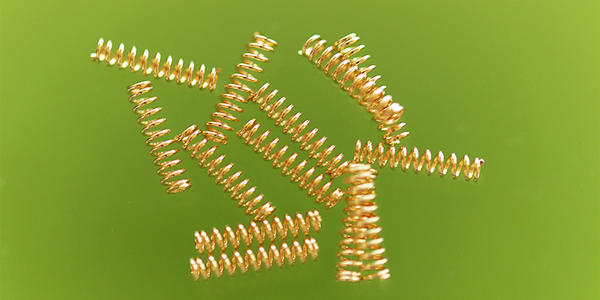source:Industry News release time:2021-11-23 Article author:sznbone Popular:POGO PIN

The corrosion of the spring can be divided into organic chemical corrosion and photoelectric catalytic corrosion according to the type of reflection. They are all the result of the transformation of the metal material molecules on the surface of the spring or the result of the gains and losses of electronic devices becoming positive ions.
If the metal material on the surface of the spring only chemically changes with the surrounding materials, the corrosion caused by the spring is called organic chemical corrosion. For example, the air oxidizes the spring into an air oxide film in particularly dry air, and the spring chemically reacts with the liquid or the residue in the liquid in the non-electrolyte liquid state, etc., which belong to organic chemical corrosion.
If the spring touches the acidity and alkalinity of the solution, the corrosion caused by the action of the microbattery is called photoelectrocatalytic corrosion. For example, the spring is in contact with acid-base or acidic acid solutions. These aqueous solutions are all electrolyte solutions. Due to the defects or residues on the surface of the spring, different electric potentials are generated, and the spring continues to be corroded by electrolysis; In humid and cold air, because the water vapor in the air turns into shrinking water or water droplets on the surface of the spring, and the corrosive gas in the air (such as sulfur dioxide and hydrogen chloride in organic waste gas or corrosion resistance in deep sea air, etc.), it melts and shrinks. Electrolyte solution is produced in water or water droplets. In addition, the residues or shortcomings of the spring metal material can also produce electric levels with different potential differences, and the spring also causes electrolytic corrosion. This is a kind of photoelectrocatalytic corrosion.
The corrosion of the spring by organic chemicals is small and slow, while the corrosion by photoelectrocatalysis is critical and extensive. But generally speaking, organic chemical corrosion and photoelectrocatalytic corrosion exist at the same time.
In the whole process of manufacturing, storage, and application, springs are often corroded by surrounding materials. Because the spring is fully exerted by its elasticity during operation, the elasticity of the spring will change and lose its effect after being corroded. Therefore, avoiding the corrosion of the spring can ensure the smooth operation of the spring and increase its service life.
The anti-corrosion method of the spring generally selects the protective layer, which can be divided into: metal material protective layer, organic chemical protective layer, non-metallic material protective layer and transient protective layer according to the characteristics of the protective layer. The first three methods are mainly described in detail here.
Read recommendations:
M1849 2.0x8.5(2A)pogo pin Processing
The role and performance of pogopin connector
What factors should be considered in the design of pogopin connector?silver thimble Manufacturing.ro